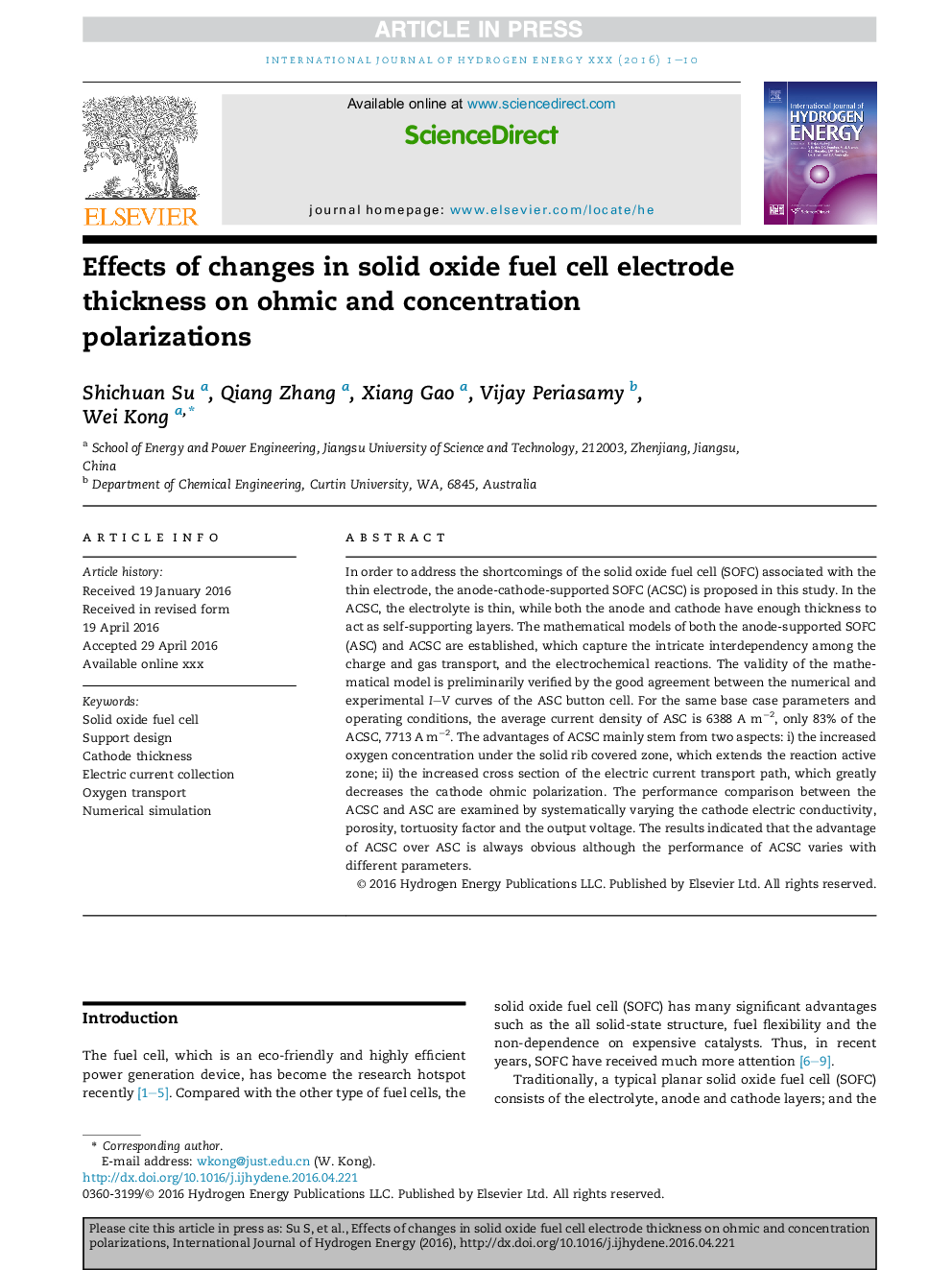| Article ID | Journal | Published Year | Pages | File Type |
|---|---|---|---|---|
| 5147891 | International Journal of Hydrogen Energy | 2016 | 10 Pages |
Abstract
In order to address the shortcomings of the solid oxide fuel cell (SOFC) associated with the thin electrode, the anode-cathode-supported SOFC (ACSC) is proposed in this study. In the ACSC, the electrolyte is thin, while both the anode and cathode have enough thickness to act as self-supporting layers. The mathematical models of both the anode-supported SOFC (ASC) and ACSC are established, which capture the intricate interdependency among the charge and gas transport, and the electrochemical reactions. The validity of the mathematical model is preliminarily verified by the good agreement between the numerical and experimental I-V curves of the ASC button cell. For the same base case parameters and operating conditions, the average current density of ASC is 6388Â AÂ mâ2, only 83% of the ACSC, 7713Â AÂ mâ2. The advantages of ACSC mainly stem from two aspects: i) the increased oxygen concentration under the solid rib covered zone, which extends the reaction active zone; ii) the increased cross section of the electric current transport path, which greatly decreases the cathode ohmic polarization. The performance comparison between the ACSC and ASC are examined by systematically varying the cathode electric conductivity, porosity, tortuosity factor and the output voltage. The results indicated that the advantage of ACSC over ASC is always obvious although the performance of ACSC varies with different parameters.
Related Topics
Physical Sciences and Engineering
Chemistry
Electrochemistry
Authors
Shichuan Su, Qiang Zhang, Xiang Gao, Vijay Periasamy, Wei Kong,
